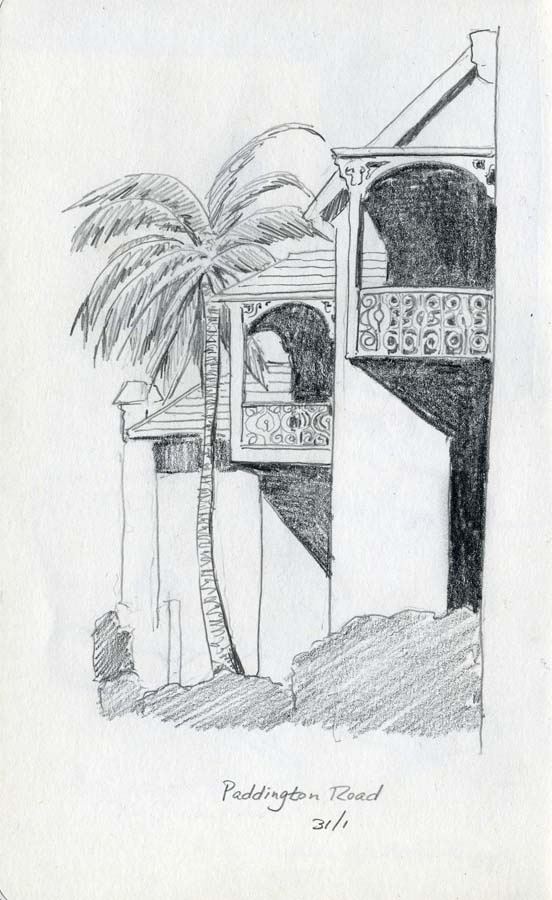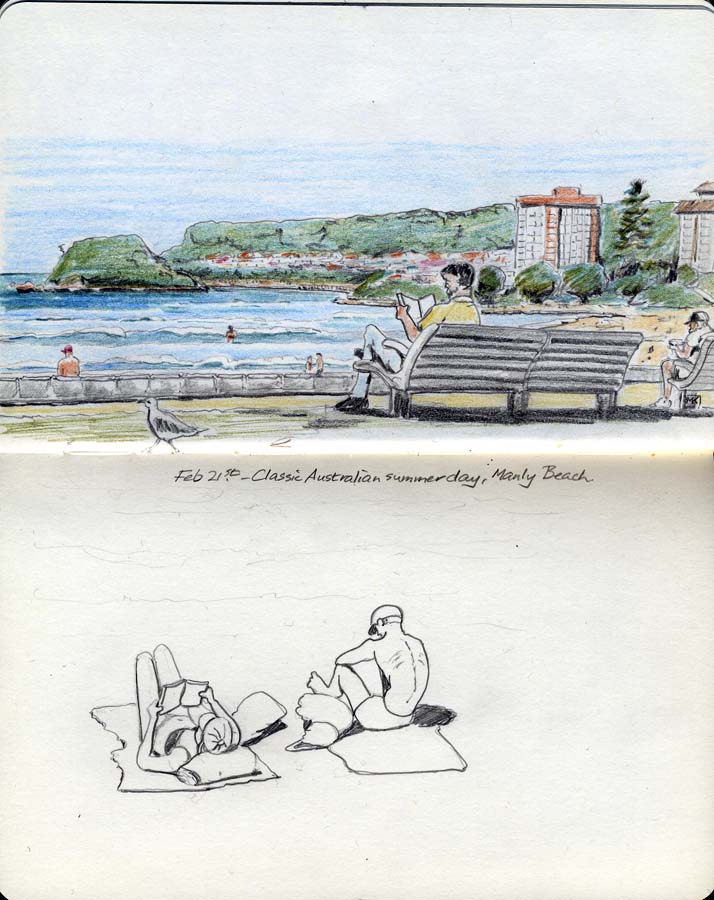
Contact me Go to home page Return to main travel page
2023
Cyclone-dodging in New Zealand
(and a little more Sydney)
Contact me Go to home page Return to main travel page
Artwork & text © Michael Kluckner, 2023
| A trip which demonstrated the adage that
the travelling is sometimes more interesting than the destination.
We had "left New Zealand for our old age," preferring places like
Indonesia or Mexico or Morocco, and decided it was a good time to
go there after three years of no travel, or at least of no challenging
travel. New Zealand is safe, quite easy to move around in, and the people are friendly. Was it interesting? Well, sort of. There's a sameness to the towns and to the (North Island) landscape – we didn't get to the South Island, partly due the National State of Emergency declared while we were there. Much of the frisson of our journey was due to Cyclone Gabrielle, as well as our anxiety before we even arrived about the damage done by very heavy rains a couple of weeks before we left Sydney on February 4th. We'd made no bookings, thank goodness, and actually shortened our trip by 4 days. As the cyclone came onto North Island, we found ourselves heading south faster, then moving as far west as we could when the cyclone's path changed. We had only one night, February 13th, of gale-force winds in New Plymouth and we missed the torrential rains that trashed the Coromandel Peninsula and Hawke's Bay a few days after we'd moved on. |
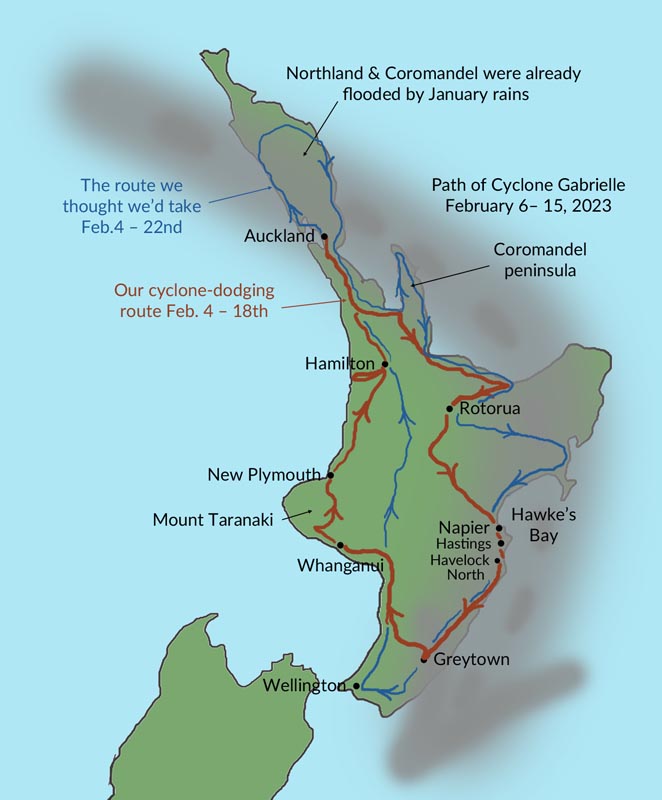
| A few notes on travelling: car rental was easy – a small
Toyota from Snap Rentals in Parnell, Auckland, with petrol costing
about $2.50 NZ per litre. The reason why there is effectively no
street-homelessness in New Zealand became clear: the government
had leased many motel and hotel rooms for homeless people (helping
also the economic hardship of the Covid lockdowns), which is
admirable but a bit daunting when you roll into a town and
everything has a "No Vacancy" sign; we used booking.com several
times and the "i-site" tourist info places in Napier, Whanganui
and Hamilton to find B&Bs to stay in. Restaurant and pub food
is okay. The best part of New Zealand is the people: friendly and
chatty. A note on drawing/painting: you'll see below what I did – not as ambitious as trips years ago with their pages of watercolours (there is an explanation of my evolving travel-art attitudes on the main travel page). There is a lot of scenic countryside where one might be tempted to stop and do some art or even take snapshots, but the roads are narrow and winding and very few of them have shoulders where you can safely pull over, which is frustrating. (Below) There is a tremendous amount of this kind of thing: dairy cattle and sheep on picturesque hillsides, except they are usually more tightly packed on the green grass (this is actually an Australian oil painting from 2009). New Zealand has had a lot of rain recently. |
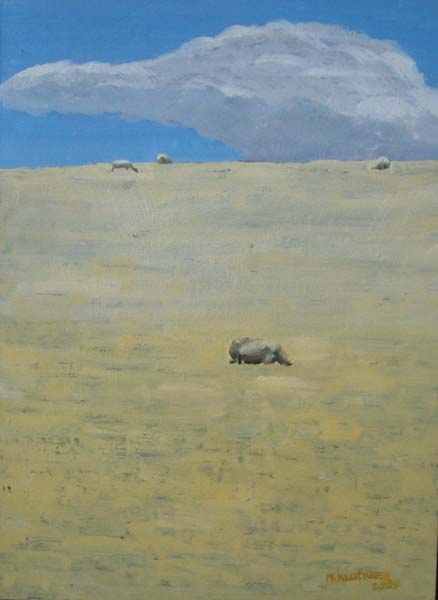
So, we had an excellent couple of days in Napier wandering around looking at all the Art Deco buildings (built after the town's destruction by an earthquake in 1932) and got the sketchbook out a little. |
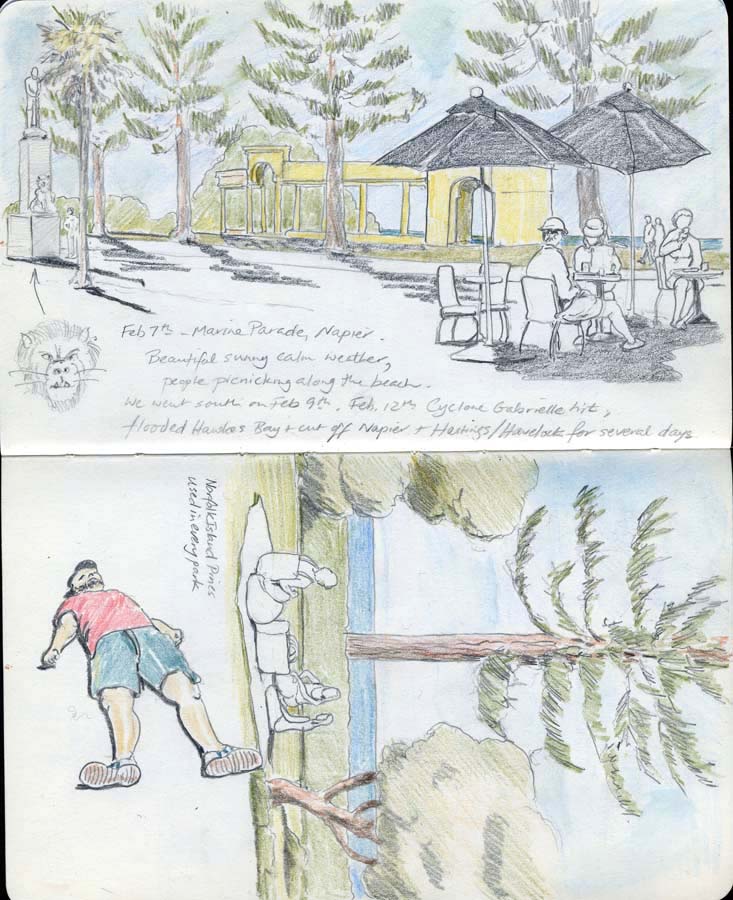

It was the old fishing boat named "Chips" that caught my eye.

Pleasant but quite bland view out onto Hawke's Bay from our very nice hotel in Ahuriri on the edge of Napier.
We had a balcony on the second floor that looked down on a fellow guest.
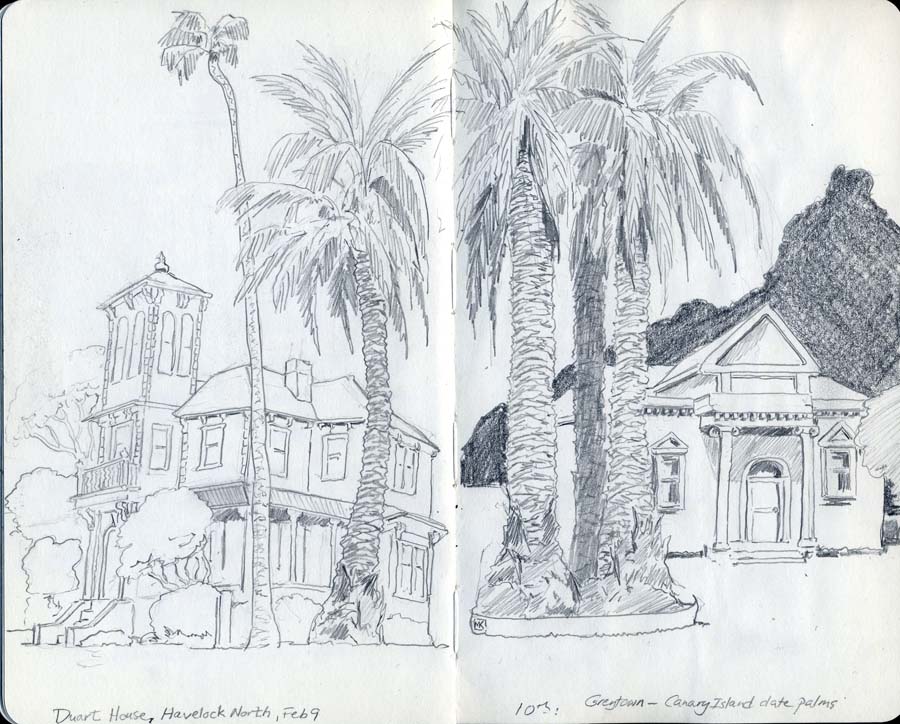
More interested in drawing the Canary Island date palms, which are very common, than the buildings.
We quickened our pace due to the weather forecast and swung sharply to the West.
The "Long White Cloud" – Aotearoa – is the current Maori name for New Zealand.
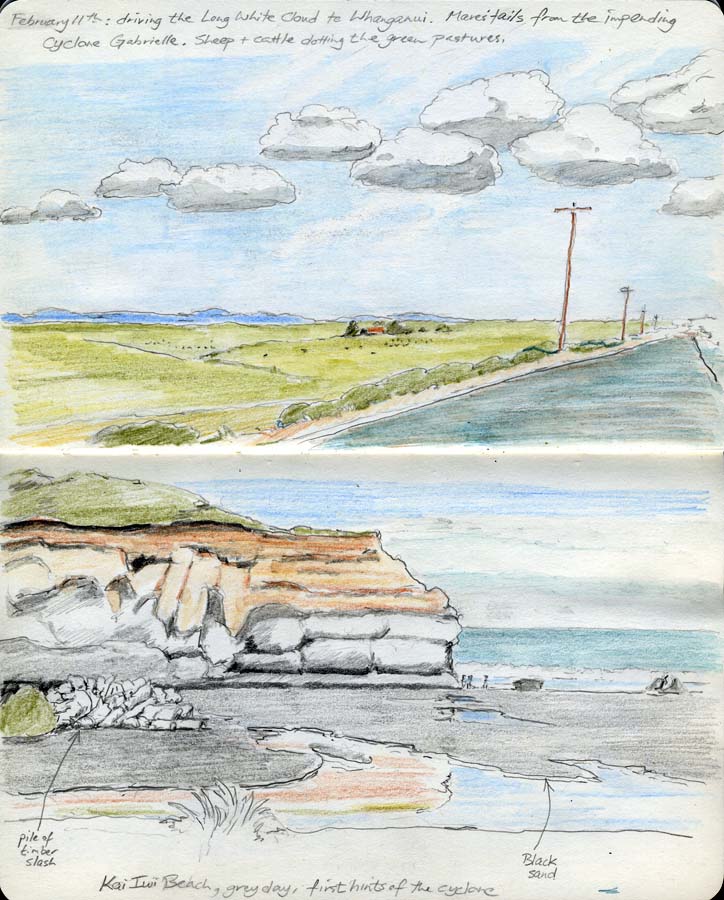
The "pile of timber slash" noted on the beach, washed down in previous storms, becomes significant – see below.
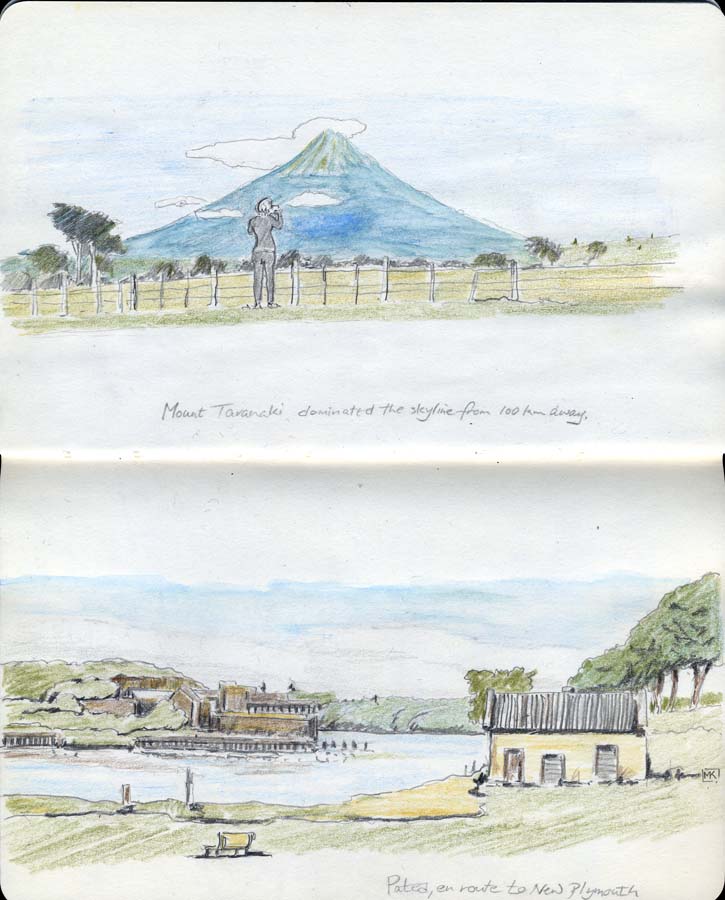
As far west as we could get – dramatic Mount Taranaki reminds you of the island's constant volcanic activity.
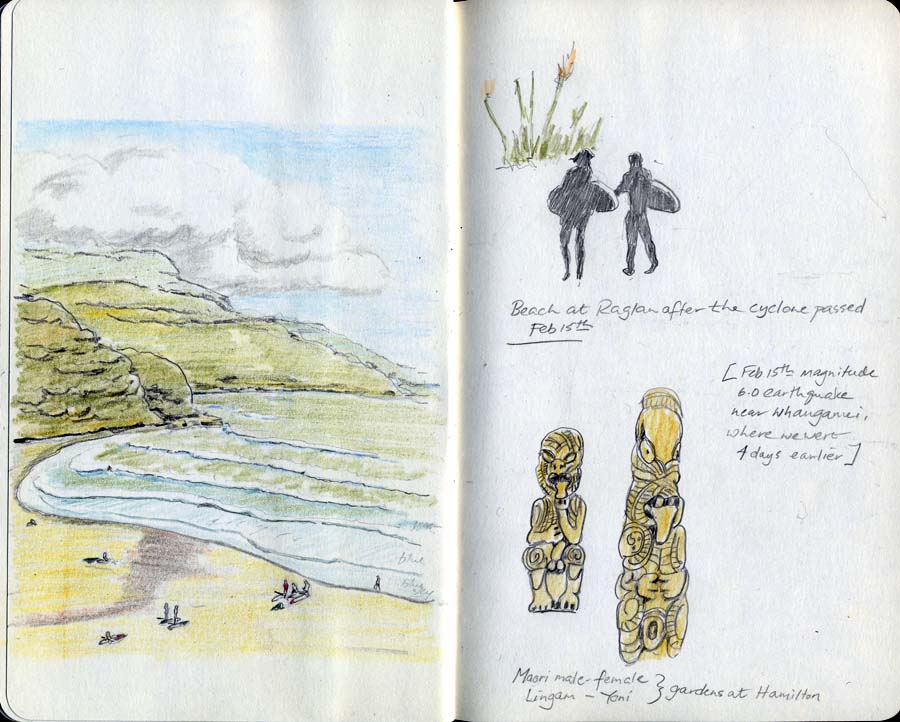
Drove out to the coast from Hamilton to Raglan, what should have been a 45 km drive but turned into a 110 km one due to a detour caused by a "slip" from the rains.
The explicit eroticism (I guess you'd call it) of Maori sculpture is a bit surprising.
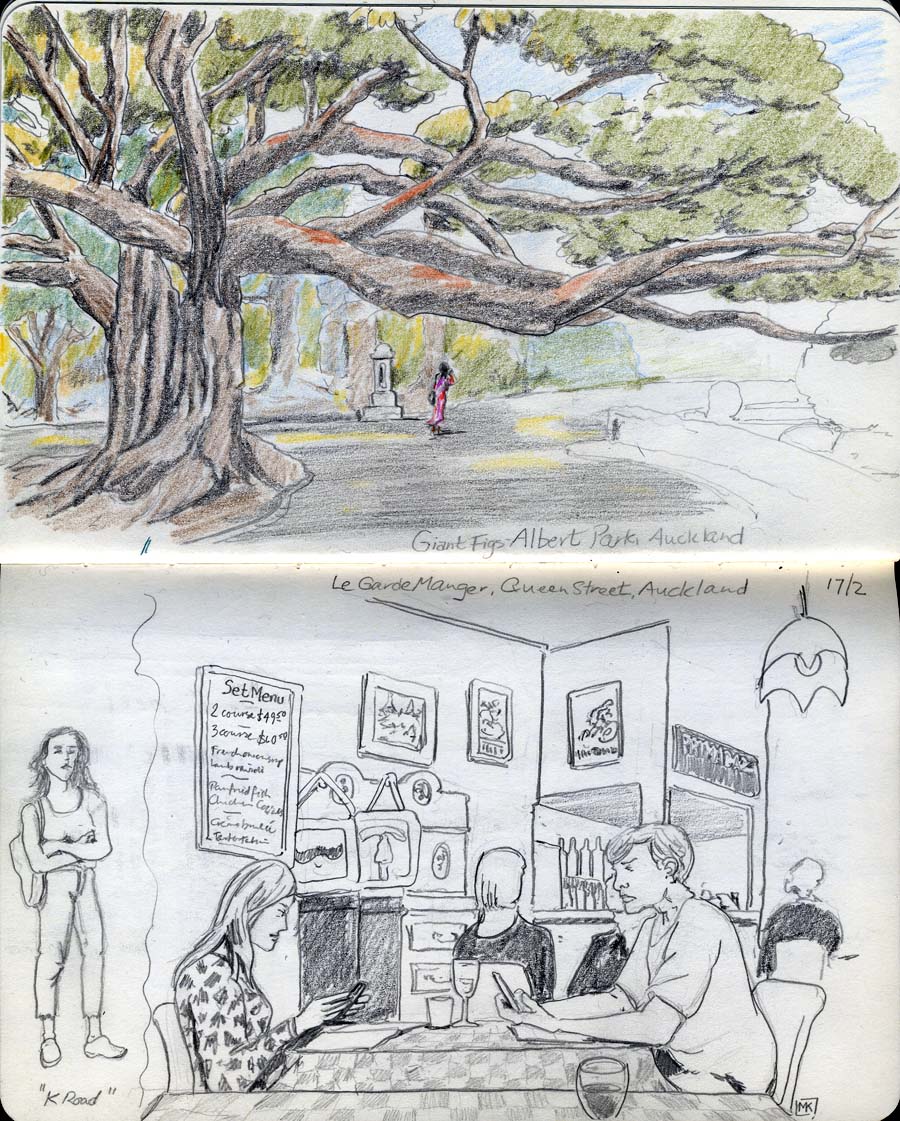
| Last couple of days in Auckland, staying near the very hip and
appealing K Road (Karangahape Road) near the top of Queen Street,
with shops selling T-shirts saying, for example, "I Think,
Therefore I'm A Lesbian." After being in the aging, comfortable,
White demographic of small-city NZ, this part of Auckland was
youthful and multi-everything, more like Vancouver and the cities
we usually visit elsewhere. The Garde Manger restaurant near our hotel was one of the few businesses still open in a vintage building (below) that appeared on quite recent maps as "Chinese Market." Most of the other stores had closed, probably victims of the Covid lockdown. Service was really slow in the restaurant because it was very busy and, like many NZ businesses, it had 'help wanted' signs outside its door. I couldn't resist drawing the couple at the next table while we waited for our food. They had probably arrived from work, without any free time during the day, and spent more than 15 minutes silently looking at their phones; they did chat after their food came! As with the Sydney drawings below, most of the people I draw are holding phones – the woman in the Albert Park drawing above spent a long time walking back and forth under the Moreton Bay fig tree talking on hers. |
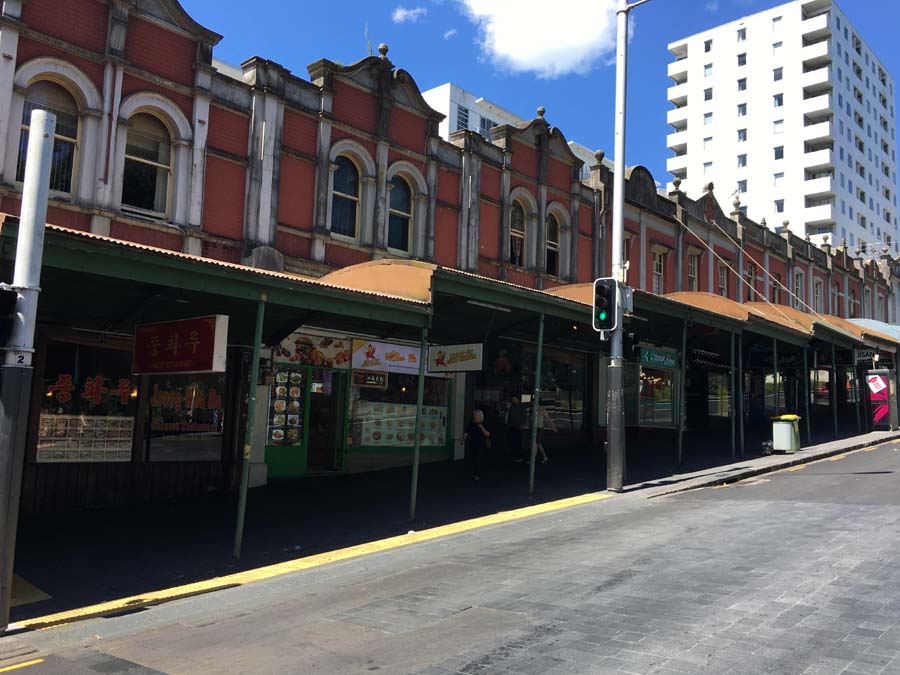
|
More snapshots...
It became clear that much of the devastation of the cyclone was
due to piles of timber slash that washed in the flood waters
toward the ocean, wiping out bridges, rail lines and houses along
the way.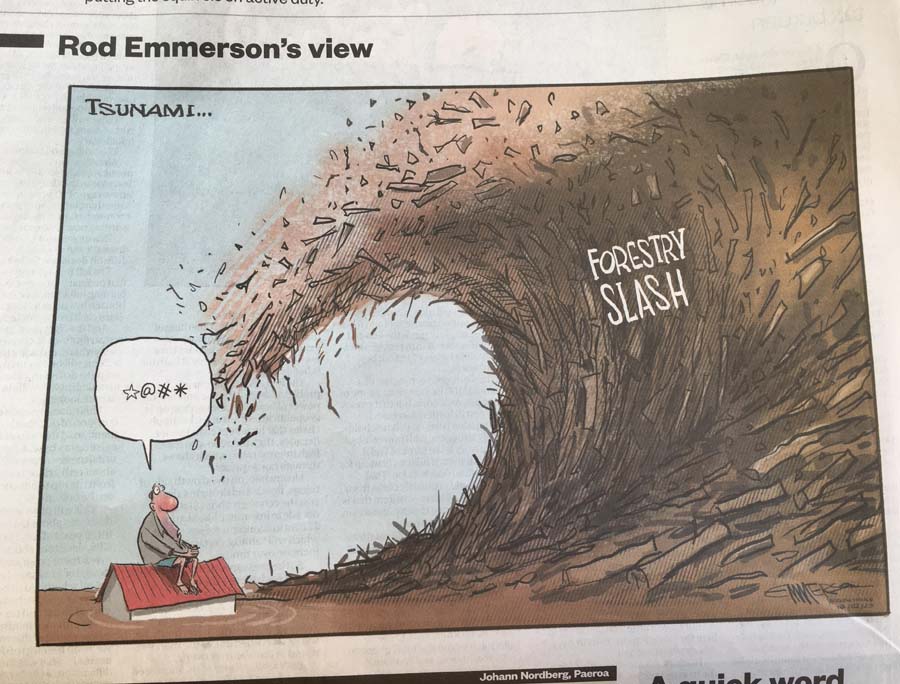 We had noticed as we drove through rural New
Zealand how much of the land was taken up by plantations of
trees planted in neat grids: radiata pines that we recognized
from Australia, where they're a crop and have become almost an
invasive nuisance. There is little native kauri forest left in
New Zealand. These pine plantations have become a way for
companies to get "green credits" as part of the government's
commitment to reducing CHCs. Logging trucks are very common on
the roads...
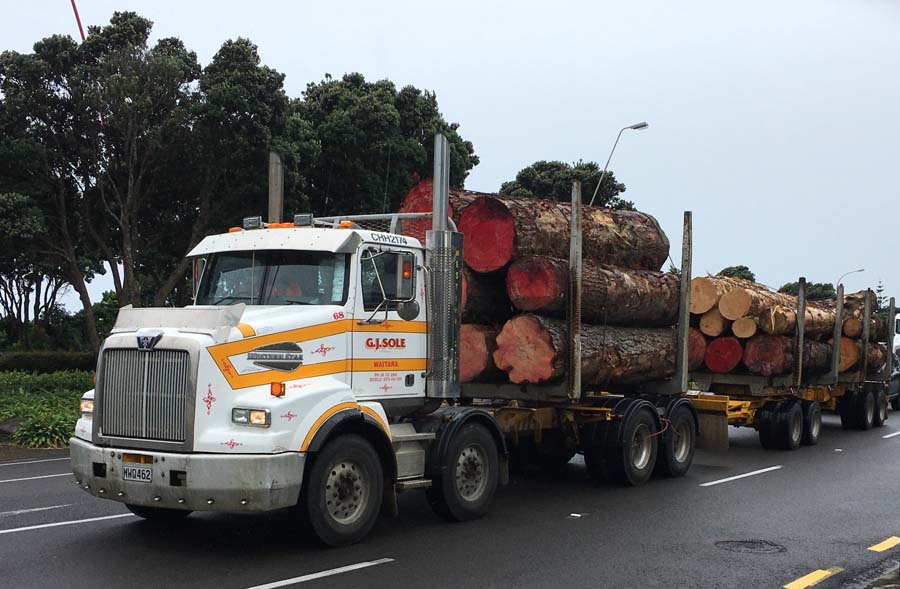 ...but the cleanup after the logging itself seems to happen rarely, as we witnessed. We passed through beautiful fertile orchard country – apples, kiwis, avocados – along Hawke's Bay, especially near Hastings, and were appalled to see on the TV news a few days later that they were wiped out by the floods, made much more damaging by the timber slash jamming into every river outlet. |
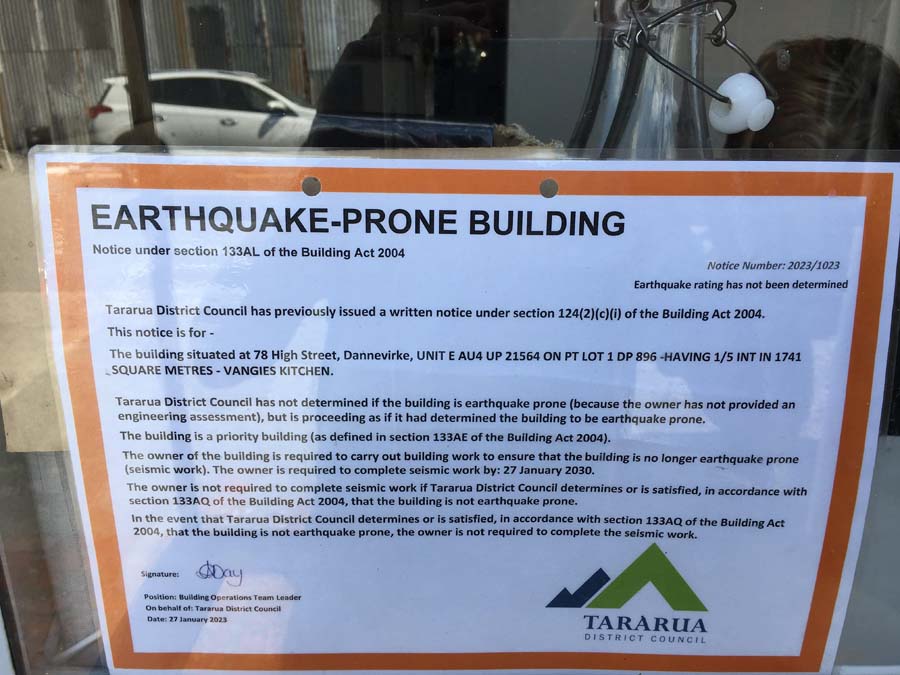
And, along the east coast of the North Island where the huge 'quake hit Napier in 1932, there are these signs on a number of buildings.
A long timeline, though: the work must be completed by 2030.

| We stayed two days in New Plymouth at the Devon Hotel, which has
a tremendous collection of high-quality artwork including this
sculpture by Bruno Catalano; the city is a bit of an arts hub,
including the Govett-Brewster
Art Gallery's collections of the pioneer video artist Len
Lye, who grew up there. The palm tree in the background bashed
itself against our window during the gale. And, below, we only saw the native kauri tree in a couple of botanic gardens – in Napier and New Plymouth – and refashioned into the St. Mary's Anglican Church in Auckland. |

And finally, lots of great Deco in a number of cities, not just Napier. This is in Whanganui.
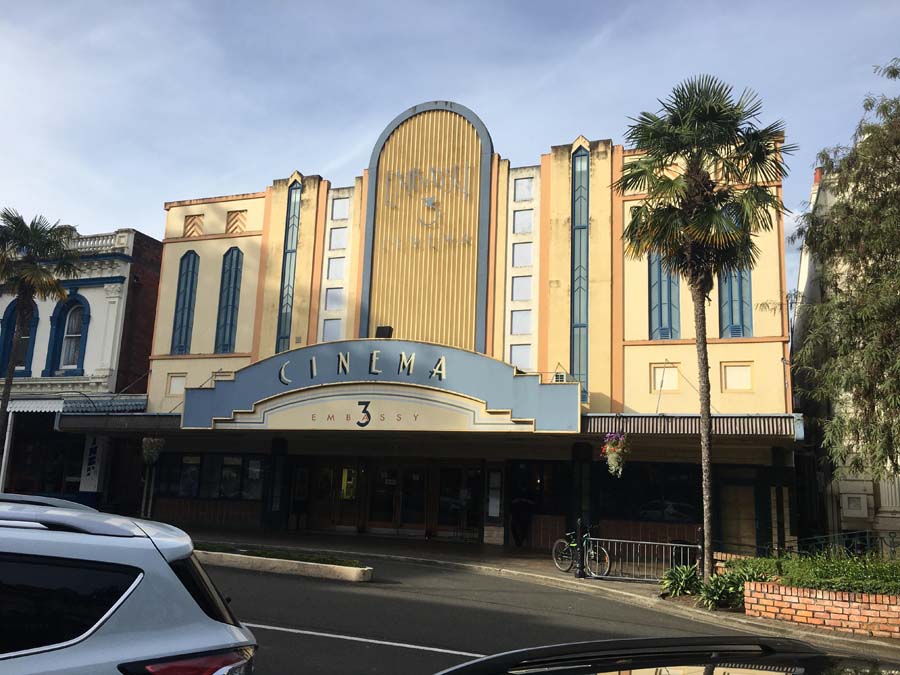
And the beautiful museum building in Rotorua, the centre of thermal activity with the smell of sulphur always in the air.

I didn't photograph the steaming mudflats because they just look like steaming mudflats.
Sydney before and after (our NZ trip)
Our daughter and grandson live in Sydney so we're there a lot, as witnessed by earlier trips indexed here.
Also, there is a lot on the artwork index page and the projects page about our time living in Australia from 2006–10.
We started and finished this trip in Sydney. Just about everyone seems to be holding a phone, like everywhere else.

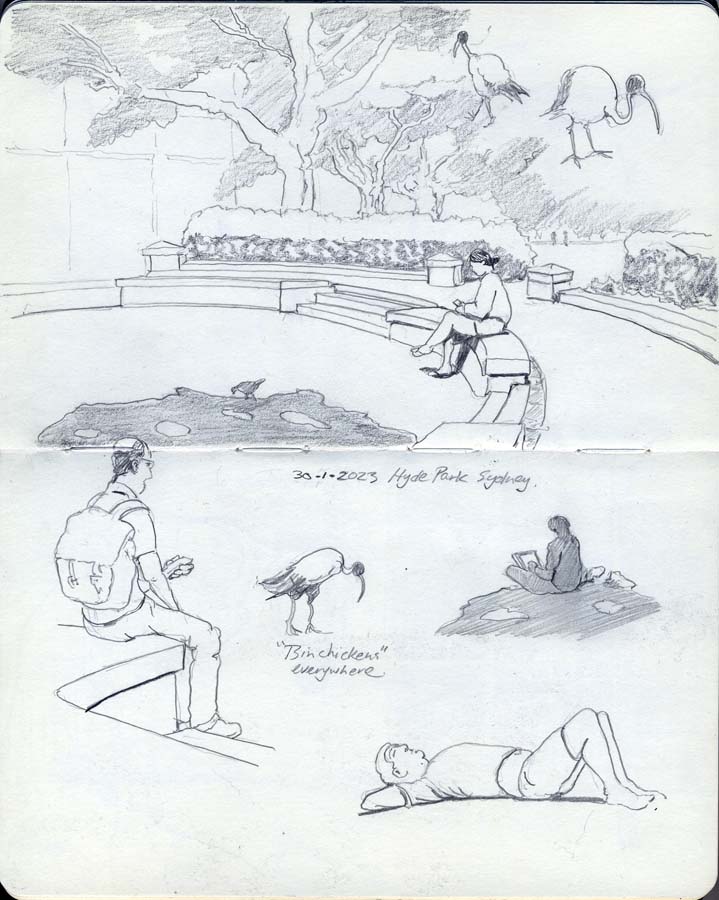
The ibis that have invaded Sydney in the past 20 years are known as Bin Chickens.
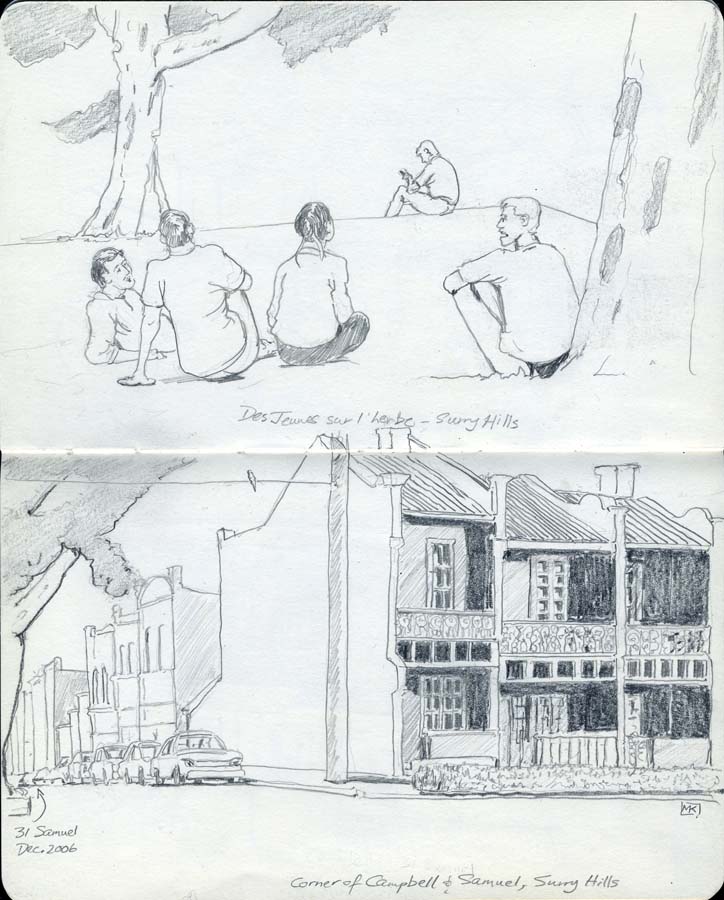
31 Samuel Street, Surry Hills – a place where we lived for a month when we moved to Australia.
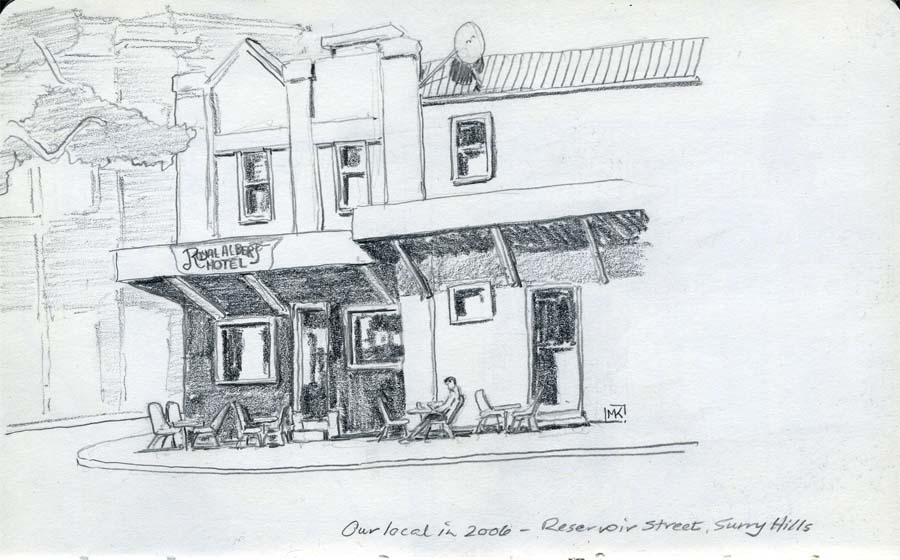
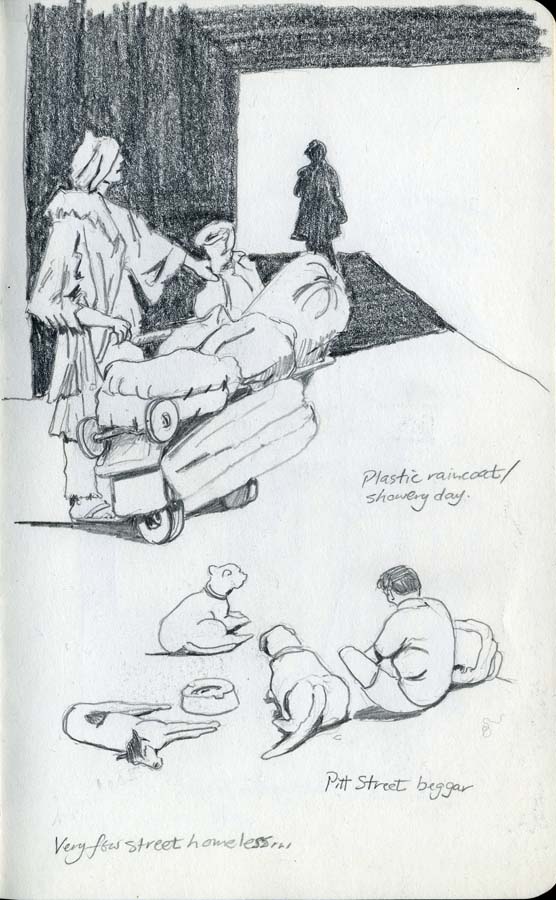
Such a relief compared with Vancouver (or anywhere else in Canada or the USA) – only a few street homeless.
